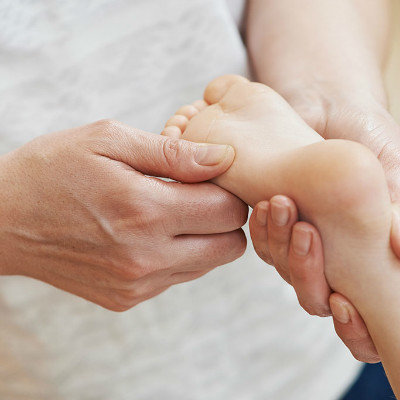Progressive spinal muscular atrophy?
summary
Spinal muscular atrophy is one of the most common fatal neuromuscular diseases. It is due to the degeneration of motoneurons in the anterior horn of the spinal cord, which leads to symmetry, progressive atrophy and weakness of the proximal muscles of the patients, and eventually leads to respiratory failure and even death, ranking second in the fatal autosomal genetic diseases. It belongs to autosomal recessive genetic disease. The incidence rate is 1/6000~1/10000. If both husband and wife have a SMA child, the probability of reborn children is 25%, the probability of asymptomatic carriers is 50%, and the probability of having a normal child is 25%. What about progressive spinal muscular atrophy?
Progressive spinal muscular atrophy?
1、 Spinal muscular atrophy in infants: 1. Symmetrical myasthenia: autonomic movement decreases, proximal muscles are most affected, and hands and feet are still active. 2. Muscle relaxation: the tension is very low. When the baby is in supine position, the lower limbs are in frog leg position, and the knee reflex is reduced or disappeared. 3. Muscle atrophy: mainly involved in the limbs, trunk, followed by neck, chest muscles. 4. Because of the weakness of intercostal muscles, no involvement of diaphragmatic muscles and normal movement of diaphragmatic muscles, the chest subsides during exhalation and presents contradictory breathing. 5. The course of disease is progressive, and the muscle atrophy dominated by medulla oblongata in the late stage is the most significant, accompanied by muscle fiber tremor. Pharyngopalatal muscle atrophy causes dyspnea and dysphagia, and easy to have absorptive pneumonia.
2、 Juvenile spinal muscular atrophy is a mild lesion of infantile type. It usually starts at 2-7 years old, sometimes later. It begins with abnormal gait, weakness of the proximal muscles of the lower limbs, and the disease progresses slowly, gradually involving the distal and upper limbs. Juvenile dominant genetic muscular atrophy: this type is a special dominant genetic disease, onset in 3-4 years old, mainly manifested as proximal muscle weakness and atrophy, mild condition, does not affect life, can live normally.
3、 Intermediate type of spinal muscular atrophy, also known as chronic infantile type, starts at 3-15 months after birth, begins with proximal myasthenia, and then affects the upper limbs. The disease progresses slowly, and the facial muscles are often not affected. Middle aged male: the performance for the hands of weakness, hand internal muscle atrophy, may have "claw hand", "ape hand" deformity. It is difficult to fasten clothes buttons, pick small items and write. Later, muscle weakness spread to adjacent muscle groups, involving the arm and shoulder, and then developed to the lower limbs. There are also cases of foot disease, extending to the lower limbs, and then the upper limbs.
matters needing attention
Spinal muscular atrophy is one of the most common fatal neuromuscular diseases. It is due to the degeneration of motoneurons in the anterior horn of the spinal cord, which leads to symmetry, progressive atrophy and weakness of the proximal muscles of the patients, and eventually leads to respiratory failure and even death, ranking second in the fatal autosomal genetic diseases. Cooperate with the doctor, don't rush to the doctor.












